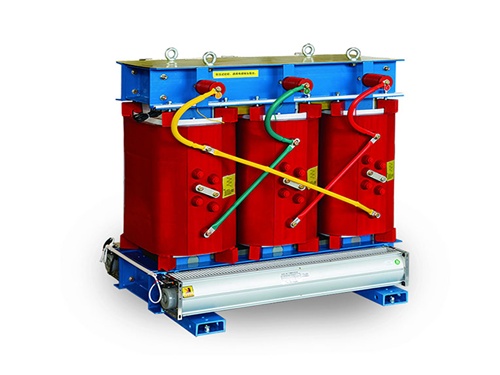

Inquiry

Project Review

Machining

Quality Control

Pass/Fail

Delivery
Working Principle of Dry-Type Transformers
A dry-type transformer is an electrical device that utilizes the principle of electromagnetic induction to change alternating current (AC) voltage. Its working principle is fundamentally similar to that of an oil-immersed transformer, but it differs in structure and cooling methods. Below is a detailed explanation of the working principle of dry-type transformers:

Electromagnetic Induction Principle
Dry-type transformers operate based on Faraday's law of electromagnetic induction. When an alternating current passes through the primary winding, it generates an alternating magnetic flux in the iron core. This alternating magnetic flux passes through both the primary and secondary windings, inducing an electromotive force (EMF) in the secondary winding. According to Faraday's law, the magnitude of the induced EMF is proportional to the rate of change of the magnetic flux.
Voltage Transformation
Turns Ratio Determines Voltage Ratio: Dry-type transformers achieve voltage transformation by altering the turns ratio between the primary and secondary windings. If the secondary winding has more turns than the primary winding, the output voltage will be higher than the input voltage, and such a transformer is called a step-up transformer. Conversely, if the secondary winding has fewer turns than the primary winding, the output voltage will be lower than the input voltage, and such a transformer is called a step-down transformer.
Formula Representation: The voltage ratio (K) is equal to the ratio of the number of turns in the secondary winding (N₂) to the number of turns in the primary winding (N₁), i.e., K = N₂ / N₁. Meanwhile, the current ratio is inversely proportional to the turns ratio, i.e., I₁ / I₂ = N₂ / N₁, where I₁ and I₂ are the currents in the primary and secondary windings, respectively.
Energy Transfer and Losses
Energy Transfer: Dry-type transformers transfer electrical energy from the primary winding to the secondary winding through electromagnetic induction, realizing voltage transformation and electrical energy transmission.
Types of Losses: During the energy transfer process, dry-type transformers incur certain losses, primarily including iron losses and copper losses.
Iron Losses: Caused by hysteresis losses and eddy current losses in the iron core. Hysteresis losses occur due to the continuous friction between magnetic domains during the repeated magnetization of the iron core in an alternating magnetic field. Eddy current losses result from the induced electromotive force generated by the alternating magnetic flux in the iron core, which in turn creates eddy currents that produce heat losses in the resistance of the iron core.
Copper Losses: Caused by the resistance of the windings. When current passes through the windings, heat losses occur due to the existence of winding resistance. Copper losses are proportional to the square of the load current; the greater the load, the larger the copper losses.
Cooling Methods
Dry-type transformers use either natural air cooling or forced air cooling for heat dissipation.
Natural Air Cooling (AN): Suitable for small-capacity dry-type transformers, relying on natural convection and radiation between the transformer surface and the surrounding air for heat dissipation.
Forced Air Cooling (AF): Suitable for large-capacity dry-type transformers. It involves installing fans to force air circulation on the basis of natural air cooling, thereby improving heat dissipation efficiency. When the transformer is under heavy load and experiences high temperature rise, the fans are activated to enhance heat dissipation, which can increase the transformer's capacity by approximately 40% to 50%.
Insulation and Protection
Insulating Materials: Dry-type transformers use insulating materials such as epoxy resin to cast the windings, improving the transformer's insulation performance and mechanical strength while providing good moisture and dust resistance.
Protective Devices: Dry-type transformers are typically equipped with protective devices such as temperature controllers, fans, and trip devices. The temperature controller continuously monitors the temperature of the transformer windings and iron core. When the temperature exceeds a set value, it automatically activates the fans for cooling. If the temperature continues to rise to a dangerous level, it issues a trip signal to cut off the power supply, protecting the safe operation of the transformer.

The main products include oil immersed transformers, dry-type transformers, power transformers, amorphous alloy transformers, mining transformers, box type substations, high and low voltage switchgear and supporting products
Add: South Head of Mount Huangshan Road, Liaocheng Development Zone, Shandong, China
Email:sdbyqcj@163.com
Tel: +86 13706354419